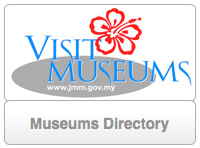Dates: 24 May – 2 July 2010 (six weeks)
Place: Oslo, Norway (premises of Riksantikvaren)
Partners
The course is organized under the auspices of UNESCO by:
- ICCROM - International Centre for the Study of the Preservation and Restoration of Cultural Property)
- Riksantikvaren - The Directorate for Cultural Heritage, Norway
- NTNU - Norwegian University of Science and Technology
- NIKU - Norwegian Institute for Cultural Heritage Research
Background and content
The ICWCT was initiated as a response to a recommendation from UNESCO's General Conference in 1980, and it has been organized in Norway every second year since 1984. It is directed towards professionals who have been working for some years within the field of wood conservation.
The ICWCT covers a wide range of interdisciplinary topics. Theoretical and practical aspects of wood conservation are given equal consideration throughout the course. Some of the most interesting cultural heritage sites constructed in wood in Norway will be visited during the main excursion at the end of the course, including the UNESCO World Heritage Sites of Urnes Stave church and the Hanseatic Wharf in Bergen. Exercises and demonstrations are organized during the main excursion. The course con cludes with a written exam, which awards university credits if passed.
The 2010 course will be based on curriculum followed in 2008 which was an improved programme developed by the partners and external experts during 2007, considering the evaluations of previous courses and maintaining highest technical and scientific approaches and standards as the previous courses.
Aim and objectives
The aim of the Course is to promote cultural understanding and research in the field of wood conser vation, and to be a valuable resource for the work of the individual participants in their respective countries.
The main objectives of the course are:
- to give participants the theoretical and practical knowledge essential for diagnosing the causes of deterioration and for selecting the most appro priate methods of conservation and restoration of wood;
- to extend the knowledge of participants beyond their own professions for a broader under standing of different aspects and approaches to wood conservation;
- to bring people with various professions from different countries and cultures together for a mutual learning experience, drawing on different experiences, practices and approaches to wood conservation and use of wooden materials.
The course programme
The Course programme is divided between lectures, laboratory exercises, conservation workshop exercises, field studies, museum visits and excursions. The curriculum includes six distinct but interconnected units covering aspects of: properties of wood; factors affecting the decay of wood; principles of conservation at a global level; preventive conservation; conservation of objects and painted surfaces including archaeological wood and furniture; conservation of wooden buildings and structures, including wood working tools and machinery. The course will include a one-week onsite workshop outside Oslo and a study tour of 4 days to selected wooden heritage sites in Norway including two World Heritage Sites.
As a part of the programme, each participant is expected to give a 20 minute presentation from his or her own work experience.
Lecturers
Between 20 and 25 lecturers will be contributing to the course. All are recognized experts within the field of conservation and with various geographic backgrounds and professional experience.
Exam
The course concludes with a written exam, giving 18 university credits if passed. A full time presence during the course period is required to be allowed to sit for the exam and to obtain the course certificate.
Fees
Participation is free of charge for the selected participants.
Participants
Applicants should be mid-career professionals with a minimum of three years work experience in wood conservation. It is of great importance for the success of the course that the participants have relevant experience to contribute to and benefit from the mutual exchange of ideas.
The number of participants is limited to 20.
Language
The working language of the course is English. A good know ledge of English is essential for the benefit of the individual participant and for the course as a whole, and must therefore be documented in the application. A certificate of language may be required.
Applications
Please fill the ICCROM application form and send it together with a full professional curriculum vitae (in English) to the contact address below. (Email applications are welcome. In the event that it is not possible to provide a scanned version of the necessary photographs and signatures, it will also be necessary to send a paper copy.)
ICCROM – Sites Unit
Via di San Michele 13
I-00153, Rome, ITALY
Tel: +39 06 58553 1
Fax: +39 06 58553349
Email: wood2010 (at) iccrom . org
Web Site: www.iccrom.org
For further information, please contact one of the following:
Prof Eir Grytli: eir.grytli (at) ntnu.no and Ms Tone Olstad: tone.olstad (at) niku.no
Application deadline
Applications should reach ICCROM by 29 January 2010 to ensure inclusion in our selection process.
 Printer-friendly version
Printer-friendly version- 8773 reads




